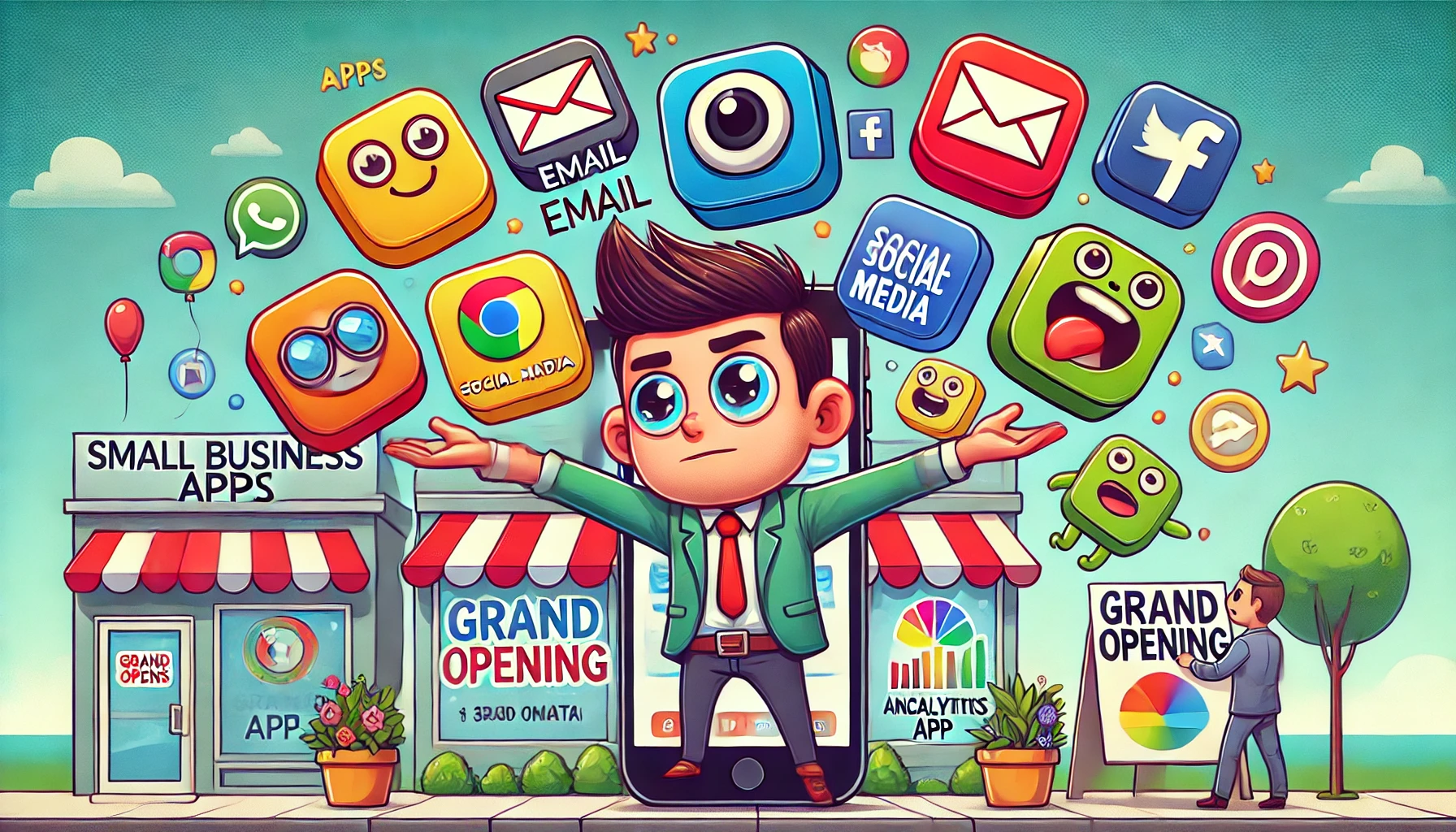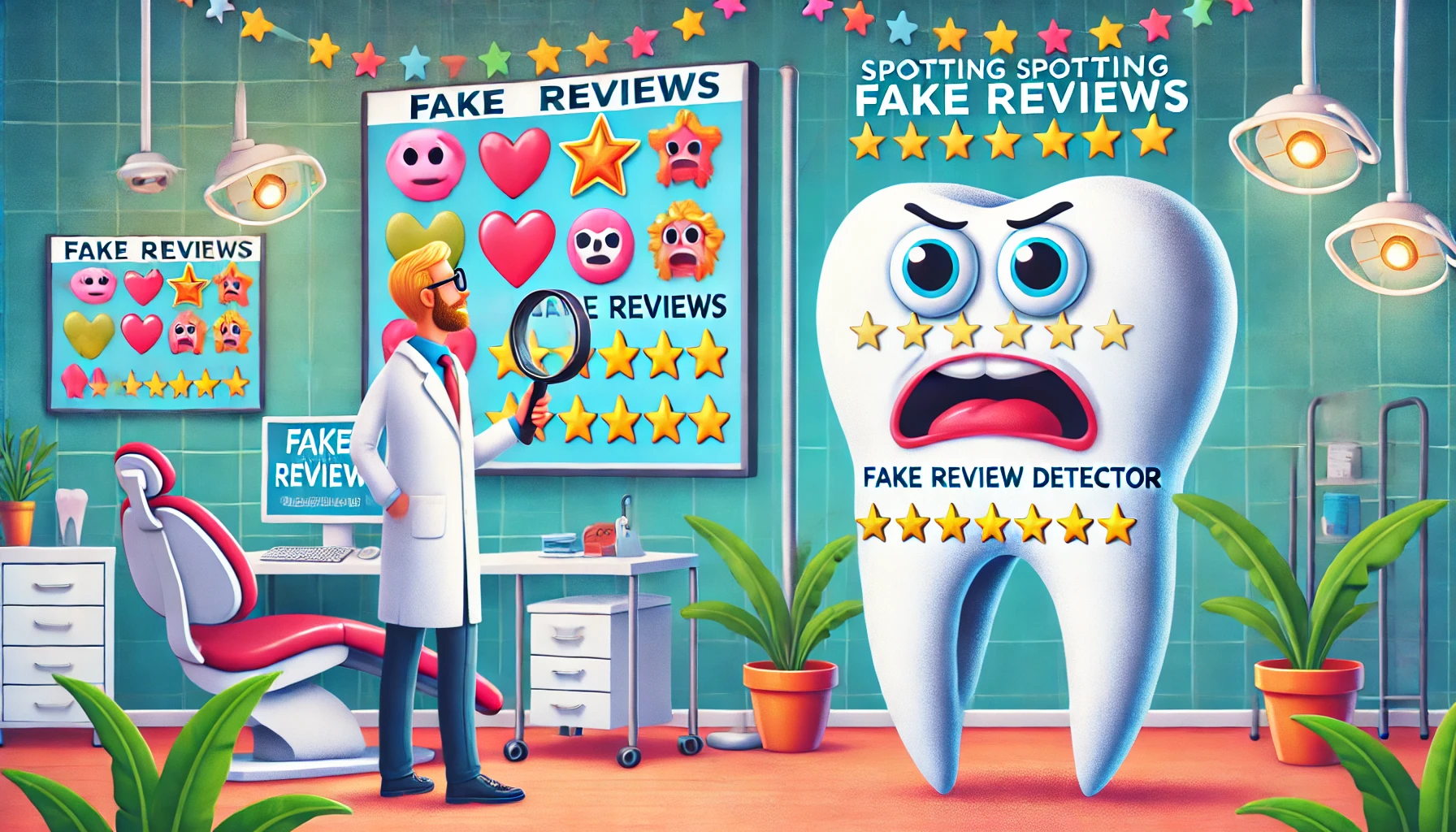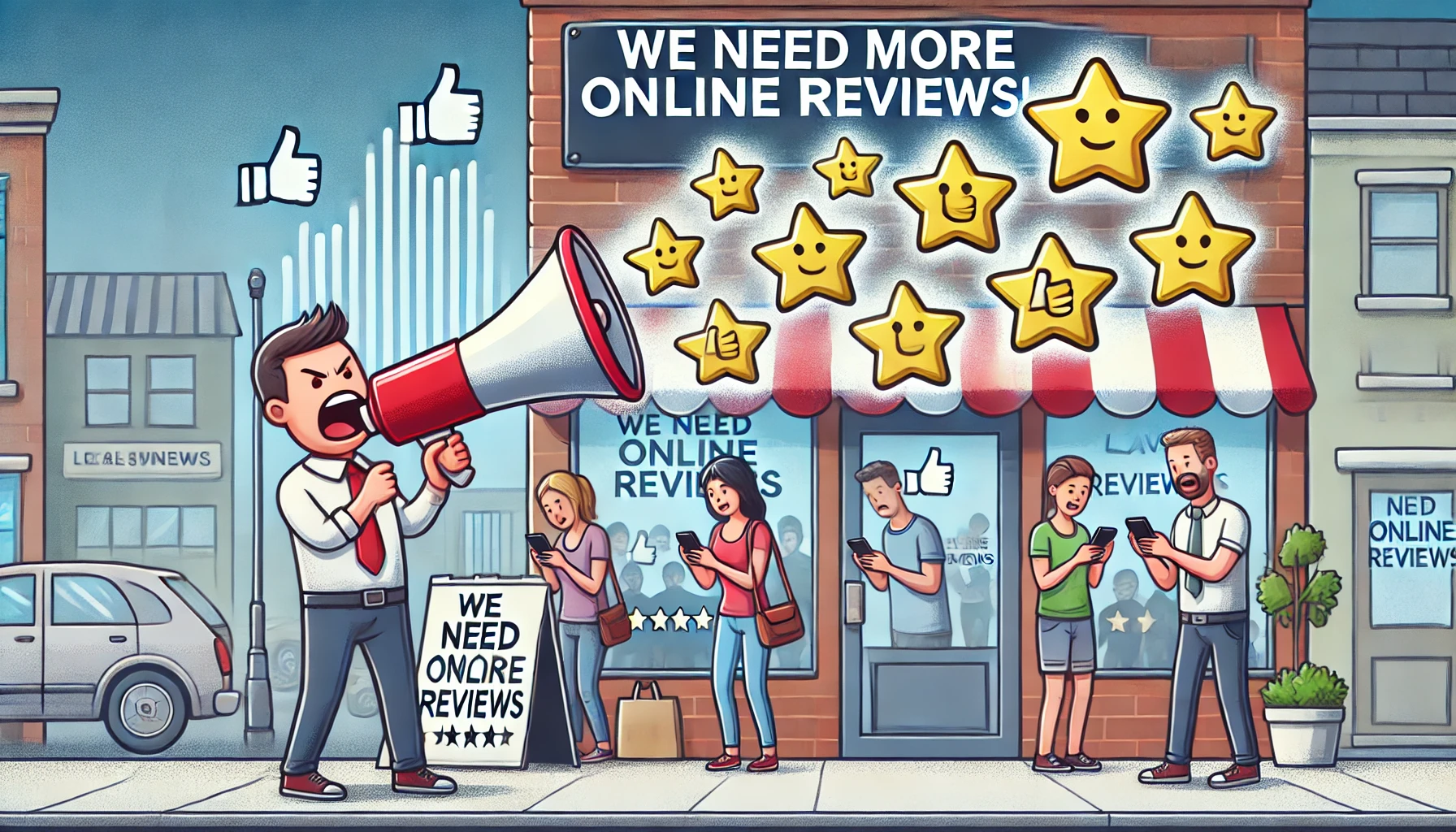Mastering ATL and BTL marketing: Maximize ROI, boost engagement
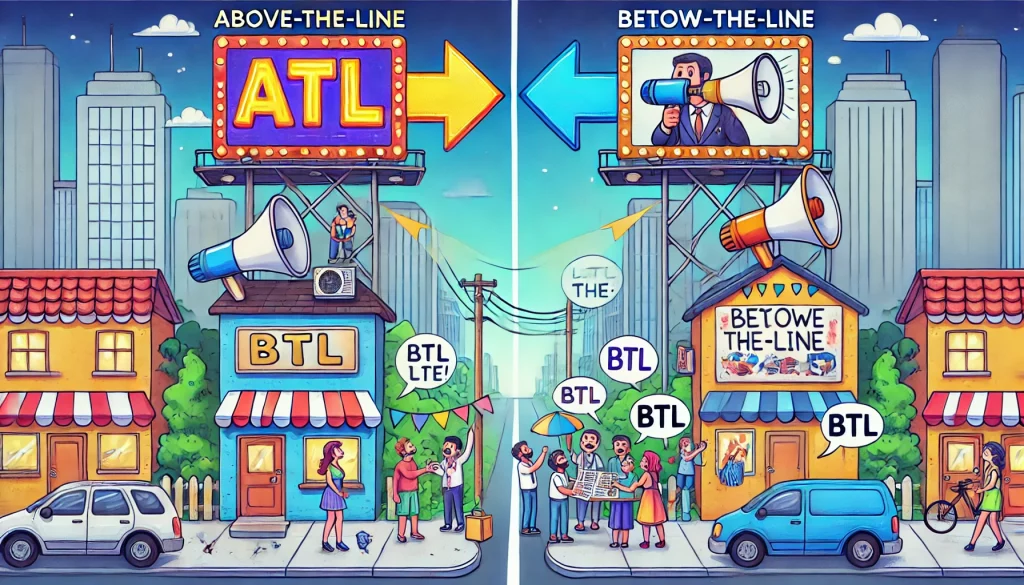
Marketing strategies have evolved dramatically over time, adapting to changing consumer behaviors and technological advancements. Two fundamental approaches, Above-The-Line (ATL) and Below-The-Line (BTL) marketing, continue to play crucial roles in modern advertising campaigns.
This article explores these strategies, their characteristics, and their impact on business growth in today’s dynamic marketing landscape.
Understanding ATL and BTL marketing
Above-The-Line (ATL) marketing
ATL marketing focuses on non-targeted, mass media campaigns to build brand awareness. Its primary goal is to reach a broad audience across various demographics, telling the brand’s story rather than directly encouraging purchases.
According to a 2023 study by Nielsen, ATL marketing still accounts for 60% of global advertising spend, highlighting its continued importance in the marketing mix.
Key characteristics
Wide reach: ATL campaigns target large, diverse audiences through mainstream media channels. A 2024 report by eMarketer reveals that ATL campaigns can reach up to 85% of a target demographic in a single day, emphasizing their powerful reach.
Brand-centric: The focus is on promoting the brand’s image and message rather than specific products. Research by Kantar Millward Brown shows that consistent brand messaging across ATL channels can increase brand recognition by up to 30%.
Examples of ATL marketing
Television advertisements: TV commercials remain a popular form of ATL marketing. They can reach local, national, or international audiences depending on the chosen channels and agreements.
Despite the rise of digital media, TV advertising still captures 28% of global ad spend, according to Zenith’s Advertising Expenditure Forecasts 2024.
Print media campaigns: Promotions in newspapers and magazines are traditional ATL methods. However, their popularity has declined with the rise of digital media consumption.
The Pew Research Center reports that print advertising revenue has decreased by 62% since 2008, reflecting this shift.
Radio advertisements: Radio ads offer an affordable ATL option, ideal for reaching a broad audience. They are particularly effective for the music industry and local businesses.
A 2023 study by the Radio Advertising Bureau found that radio ads can generate an average return on ad spend (ROAS) of $12 for every $1 invested.
Advantages and disadvantages
ATL marketing provides significant brand exposure but can be costly and difficult to measure in terms of ROI. It’s best suited for building brand awareness and visibility rather than driving immediate sales.
However, a 2024 study by Ipsos found that consistent ATL marketing can lead to a 23% increase in brand trust over time.
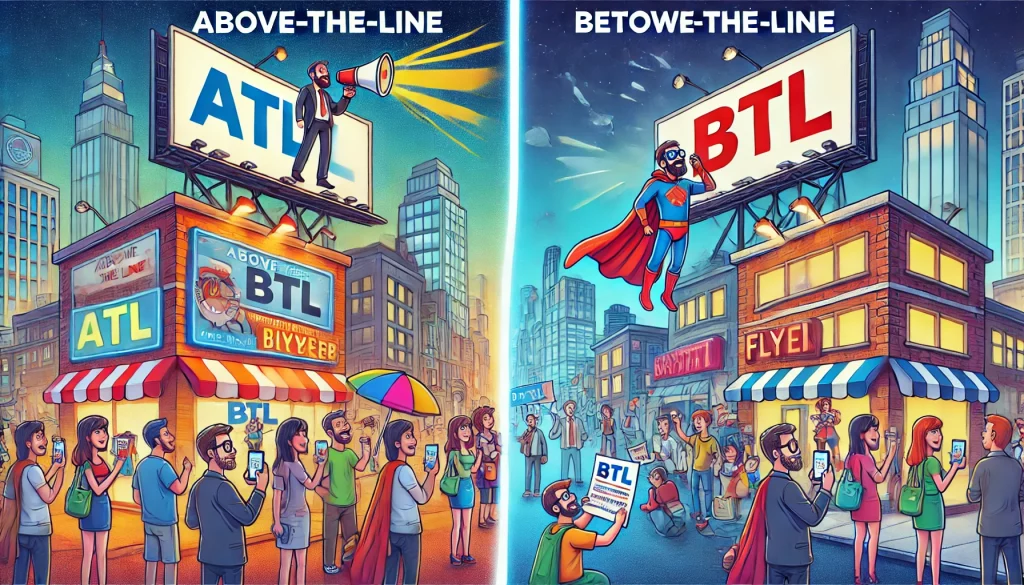
Below-The-Line (BTL) marketing
BTL marketing employs targeted, direct communication methods to reach specific audience groups. Its primary objective is to convert leads into customers through personalized engagement.
The Content Marketing Institute reports that 72% of marketers say BTL tactics have increased their engagement rates significantly.
Key characteristics
Targeted approach: BTL campaigns focus on specific demographics or customer segments. A 2023 report by Salesforce indicates that personalized BTL campaigns can increase conversion rates by up to 20%.
Direct communication: Personalized channels are used to engage with potential customers. HubSpot’s 2024 State of Marketing Report reveals that 78% of consumers are more likely to make a purchase when brands offer personalized experiences.
Examples of BTL marketing
Email marketing campaigns: Email marketing allows for personalized, cost-effective communication with potential and existing customers. It enables instant connection and can be easily tracked for effectiveness.
Campaign Monitor reports that email marketing generates an average ROI of $42 for every $1 spent, making it one of the most efficient BTL tactics.
Trade shows and exhibitions: These events attract audiences with shared interests, making them ideal for promoting products and services to a receptive crowd. They offer opportunities for face-to-face interactions and demonstrations.
The Center for Exhibition Industry Research found that 81% of trade show attendees have buying authority, highlighting the potential for direct sales impact.
Search Engine Optimization (SEO): SEO strategies help businesses improve their online visibility by incorporating relevant keywords into digital content. This approach is particularly beneficial for service-based businesses looking to boost their online presence.
BrightEdge research shows that organic search drives 53% of all website traffic, emphasizing the importance of SEO in BTL marketing.
In-store promotions: Brick-and-mortar businesses can leverage in-store marketing through seasonal promotions, workshops, or product demonstrations. These activities create engaging experiences for customers and encourage immediate purchases.
A study by the National Retail Federation found that in-store promotions can increase sales by up to 35% during promotional periods.
Advantages and disadvantages
BTL marketing is generally more cost-effective and easier to measure in terms of ROI compared to ATL. However, it may have limited reach and face high competition in certain channels.
The Direct Marketing Association reports that BTL tactics can deliver a 15-20% higher customer retention rate compared to mass marketing approaches.
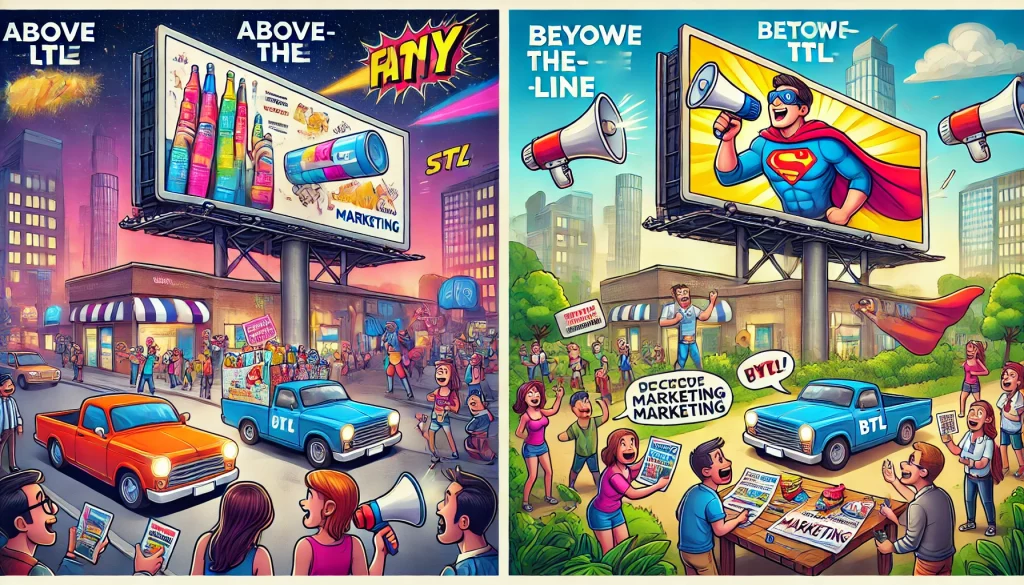
Comparing ATL and BTL strategies
Choosing the right approach
The decision between ATL and BTL marketing depends on various factors, including business goals, target audience, and budget. ATL offers broader reach and brand building, while BTL provides targeted engagement and easier measurement of results.
A 2024 survey by Gartner found that companies using a balanced mix of ATL and BTL strategies reported a 30% higher marketing ROI compared to those relying heavily on one approach.
Combining strategies: Through-The-Line (TTL) marketing
Many successful marketing campaigns combine elements of both ATL and BTL, known as Through-The-Line (TTL) marketing. This approach allows businesses to maximize their advertising impact by balancing broad outreach with targeted engagement.
According to a 2023 study by McKinsey & Company, brands that effectively implement TTL strategies see an average 18% increase in customer acquisition rates.
Historical context
The concept of “the line” in marketing originated in 1954 when Procter & Gamble began separating their advertising activities. This distinction between mass-market appeal and targeted campaigns has since become a standard in the marketing industry.
However, the digital revolution has blurred these lines, with 68% of marketers now reporting that they no longer strictly categorize their efforts as ATL or BTL, according to a 2024 survey by the American Marketing Association.

Expert opinions on marketing strategies
Alexander Novak, CEO of Global Reach Advertising: “The distinction between ATL and BTL is becoming increasingly irrelevant. Creating an omnichannel presence that resonates with your target audience is key. Combining traditional media reach with digital targeting precision has increased customer lifetime value by 25% in our campaigns.”
Dr. Emily Thornton, Professor of Marketing at Westfield University: “Successful campaigns should blur the lines between ATL and BTL approaches. Brands achieving the highest ROI create seamless experiences across multiple touchpoints, maximizing impact and conversion rates.”
Marcus Reeves, Chief Strategy Officer at Nexus Marketing Solutions: “ATL marketing remains crucial for building brand equity, but integration with BTL tactics is key. Aligning mass media messaging with targeted digital campaigns has increased brand recall by up to 40% for our clients.”

 6 min
6 min 

